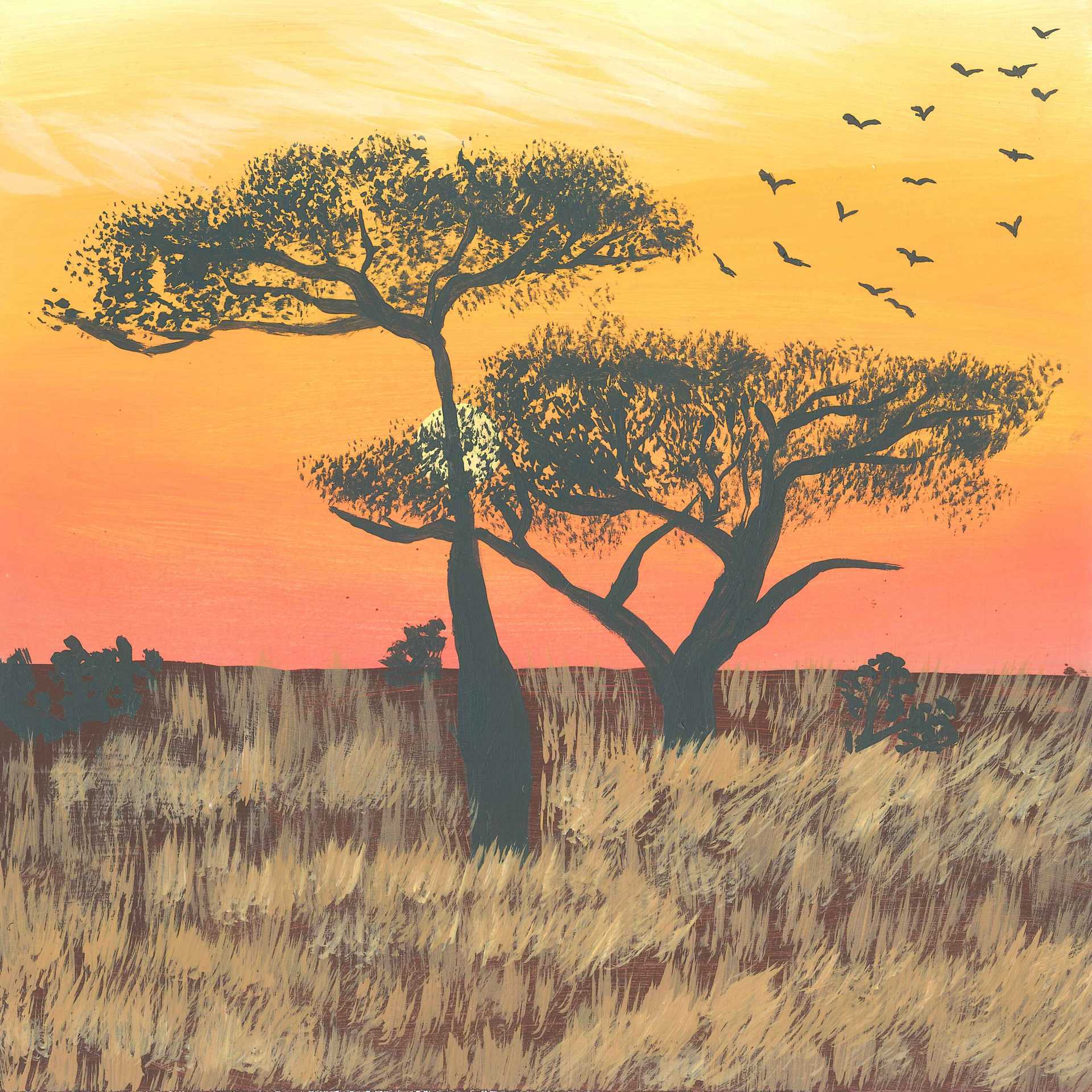
Serengeti sounds
Serengeti sounds - Lions and hippos calling
As night falls in the Serengeti-Mara savanna, you start to hear the true sounds of the Serengeti.
The deep calls of lions resonate through the plains while a hippo lazily moves in the water hole nearby. A thick insect chorus creates a constant background while distant eagle and scops owls can be heard occasionally. Oh, and of course you can also hear the hippos pooping. Besides lions, hippos, antelope, and other big game, the African savanna is also home to roving gangs of baboons. This is the typical sound of the African savanna at night.
The pink-noise frequencies of the insect sounds that underpin this soundscape are extremely calming, while the foreground movements and calls of larger animals introduce a rewarding sense of place. Immerse yourself in the recording to give yourself a taste of one of the world’s last truly wild spaces.
Why are the sounds of the Mau-Mara-Serengeti so full of life?
The Mau-Mara-Serengeti of Africa is incredibly beautiful, biodiverse, and complex. The most well-known animal sanctuary in the world, it is also among the last large-mammal refuges and probably home to the most dense populations of big wildlife on Earth. The Mara River, which snakes through the Maasai Mara and Serengeti national parks, is the area’s lifeblood, supporting numerous species – all of which occupy a specific acoustic niche.
What kinds of environments make up the Mau-Mara-Serengeti?
The Mau-Mara-Serengeti area connects the East African countries of Kenya and Tanzania and includes:
- The Mau forest – the largest remaining natural mountain forest in the region, and the source of 12 rivers
- The rich and fertile Mara River basin – home to some of the largest populations of wildlife on the continent, as well as varied cultures and traditional ways of life
- The Serengeti plain
What species can be found in the Serengeti?
The area forms a sanctuary for iconic African species including lions, leopards, cheetahs, hyenas, giraffes, buffaloes, African elephants, hippos, rhinos, and roving troops of baboons. In addition, every year, gazelle, zebra, and blue wildebeest migrate spectacularly in their hundreds of thousands from the Tanzanian Serengeti into the Kenyan Maasai Mara – a 500-mile (800 km) journey undertaken to reach grasses that spring up due to wet season rainfall.
Is the Mau-Mara-Serengeti under threat?
Though the area is one of the world’s most ancient and complex environments, and has remained unchanged for a million years, it is now endangered by human behavior, including:
- Tourism
- Industry
- Agriculture
- Poaching
- Pollution
Elephants and rhinos are particularly under threat, due to southeast Asian demand for their tusks and horns, while misuse of the Mara River has repercussions for both animal and human populations.
Many of these issues are exacerbated by the long-term repercussions of colonialism. For example, the establishment of the Serengeti National Park to embody a largely mythical, Western conception of ‘the African wilderness’ reflects the production of nature, rather than its preservation (including control over its wildlife). In the same way, British colonial management of the park led to the evacuation of its historical inhabitants in order to maintain an idealized vision of the ‘primordial’ African landscape, demonstrating the settler-colonists’ power over access to land and resources.
The rights of “natives” in national parks to practice traditional activities such as grazing, hunting, and using fire to manage pastures were governed by the colonial administration, along with their freedom of movement. ‘Bills of rights’ were handed down, the contents of which local people had no say in, and which were drafted according to stereotyped and uninformed conceptions of their lifestyles (limiting them to inaccurate notions of ‘traditional’ behavior). They were even considered to be fauna rather than human beings. In contrast, colonial development schemes for agriculture, livestock production, and housing were contradictorily incompatible with the curtailment of traditional land rights.
In the present day, safari tourism, trophy hunting, and even conservation continue to drive forced evictions, as African countries that depend on tourism prioritize foreign money over Indigenous rights. In this way, colonial mentalities, which consider people and nature to be unconnected entities, continue to deny and restrict historic, mutually beneficial interactions between traditional cultures and the natural environments with which they have customarily existed in balance.
Other earth.fm soundscapes you may enjoy:
Earth.fm is a completely free streaming service of 1000+ nature sounds from around the world, offering natural soundscapes and guided meditations for people who wish to listen to nature, relax, and become more connected. Launched in 2022, Earth.fm is a non-profit and a 1% for the Planet Environmental Partner.
Check out our recordings of nature ambience from sound recordists and artists spanning the globe, our thematic playlists of immersive soundscapes and our Wind Is the Original Radio podcast.
You can join the Earth.fm family by signing up for our newsletter of weekly inspiration for your precious ears, or become a member to enjoy the extra Earth.fm features and goodies and support us on our mission.
Subscription fees contribute to growing our library of authentic nature sounds, research into topics like noise pollution and the connection between nature and mental wellbeing, as well as funding grants that support emerging nature sound recordists from underprivileged communities.
